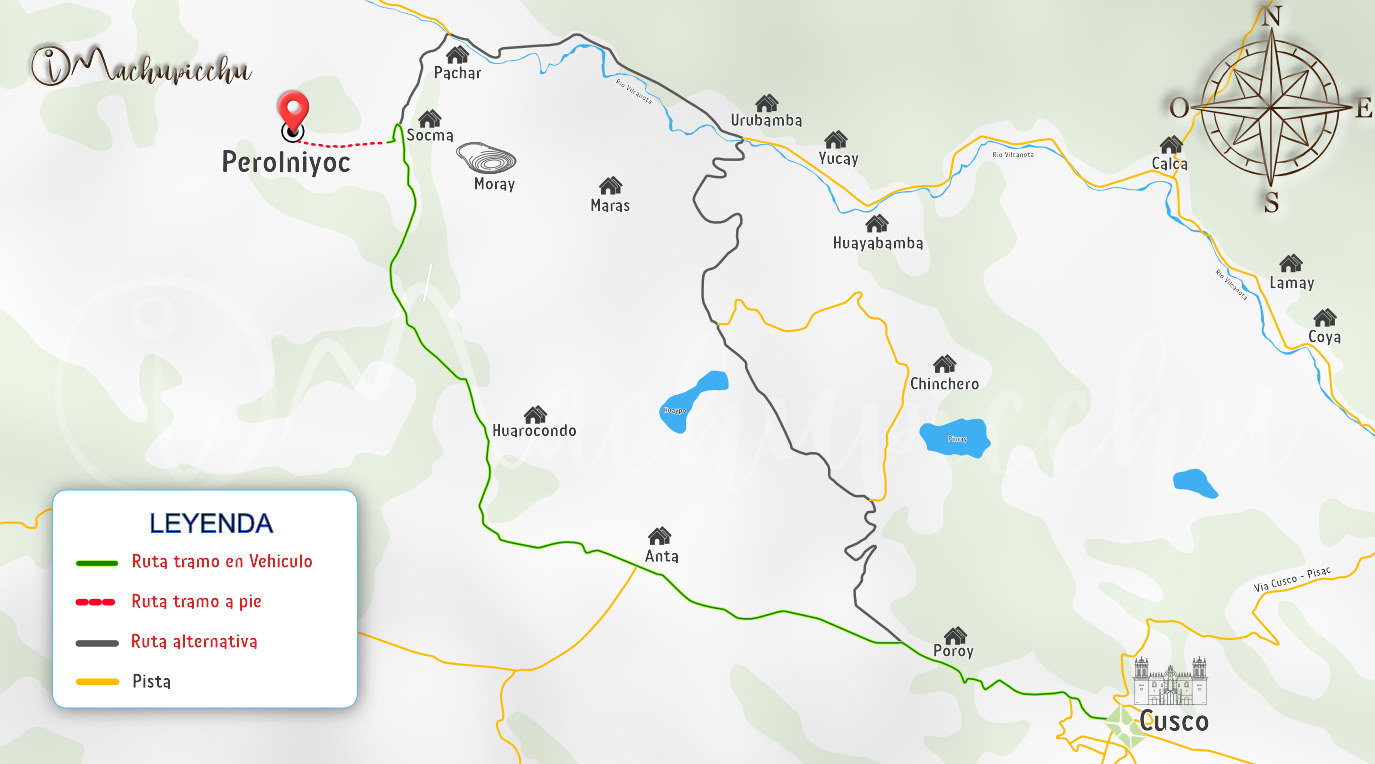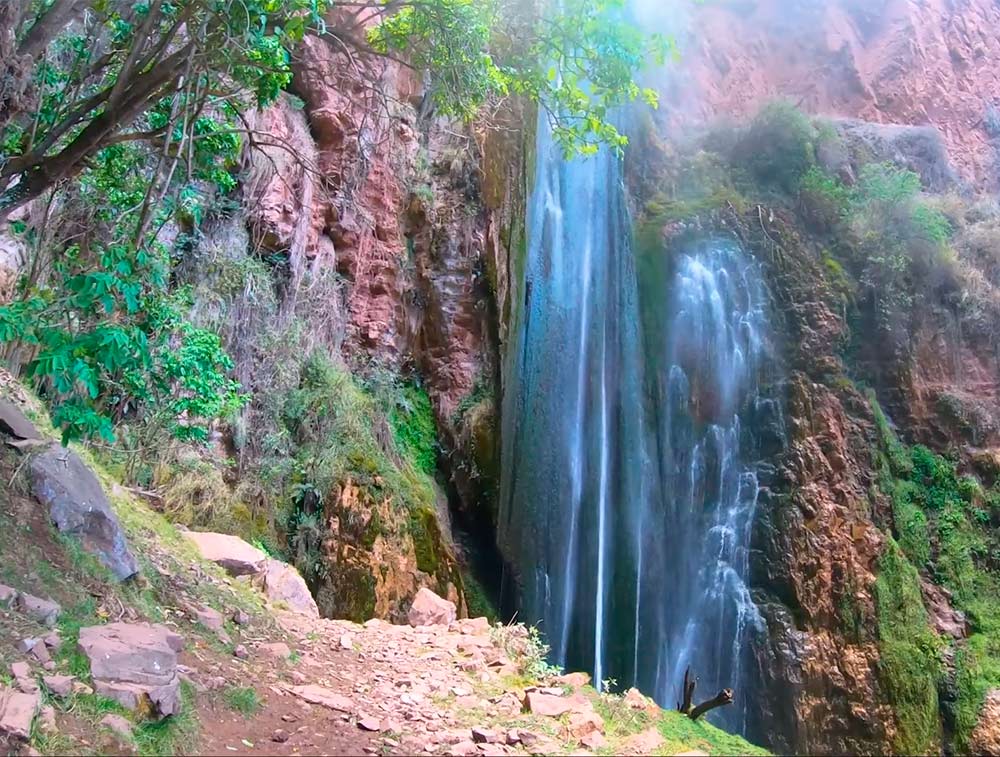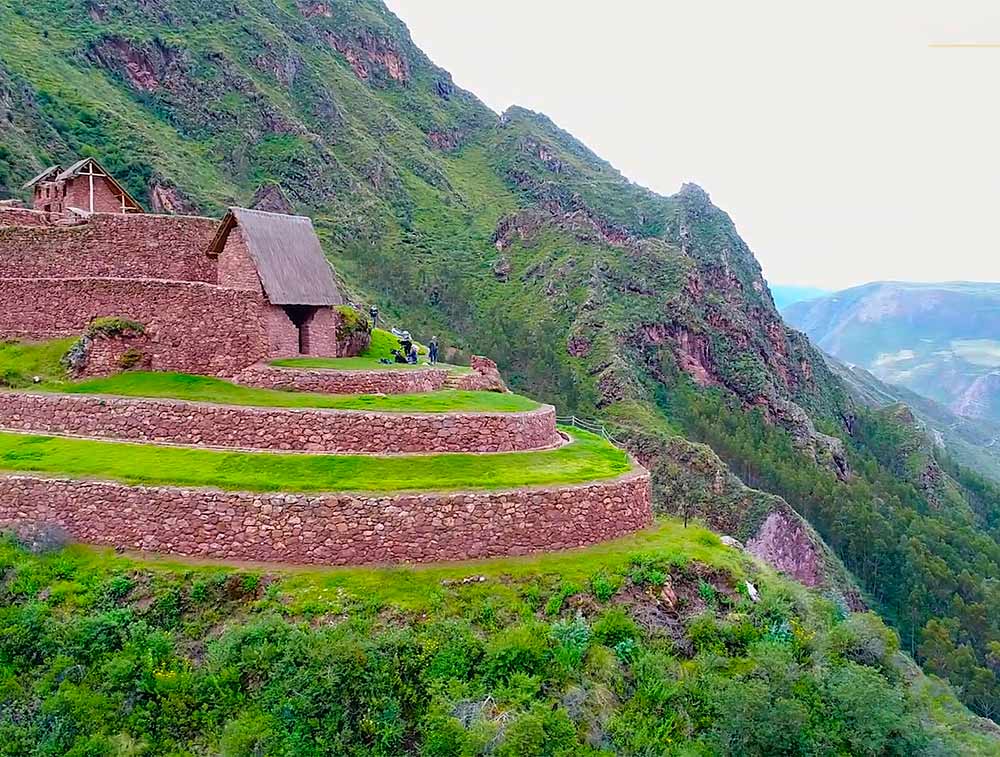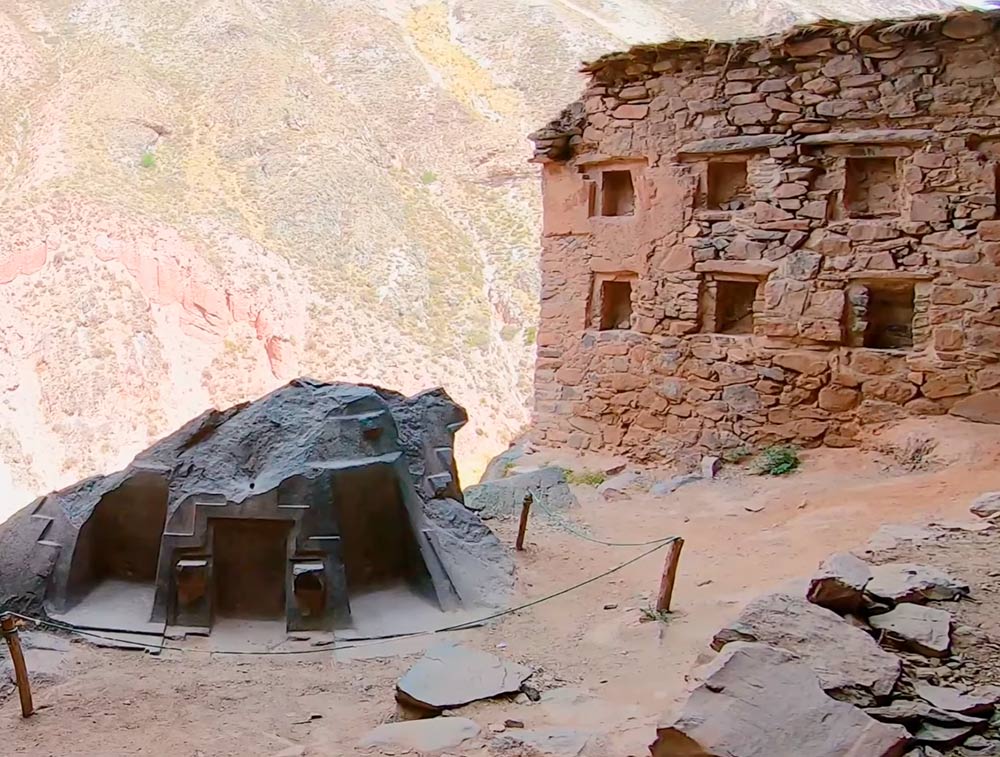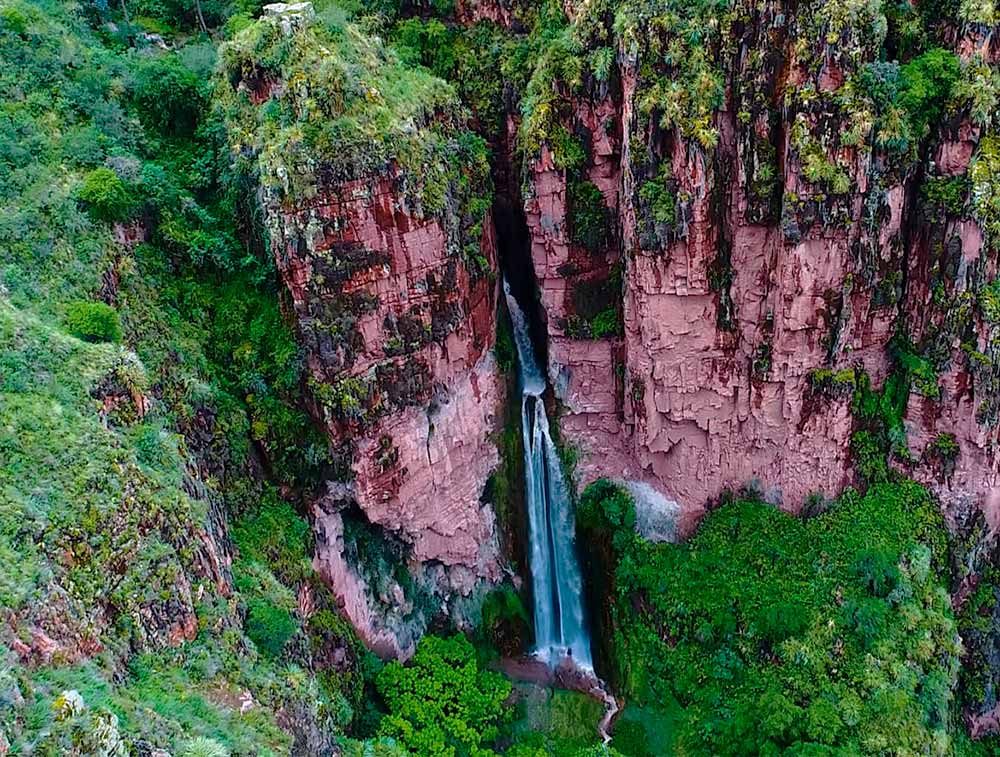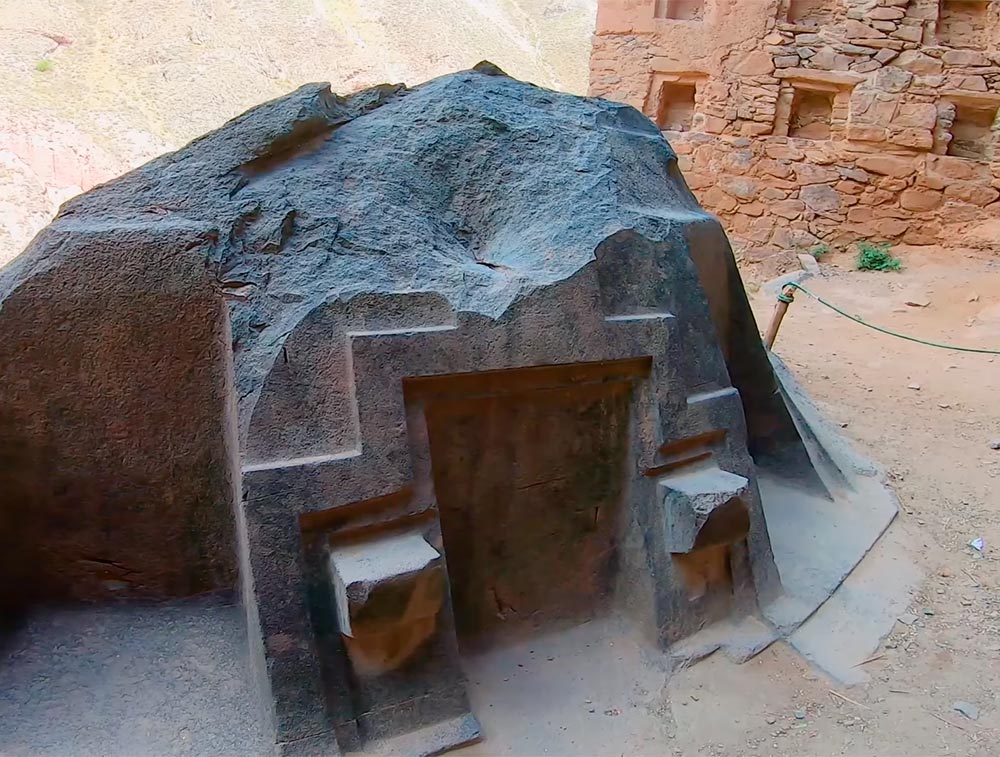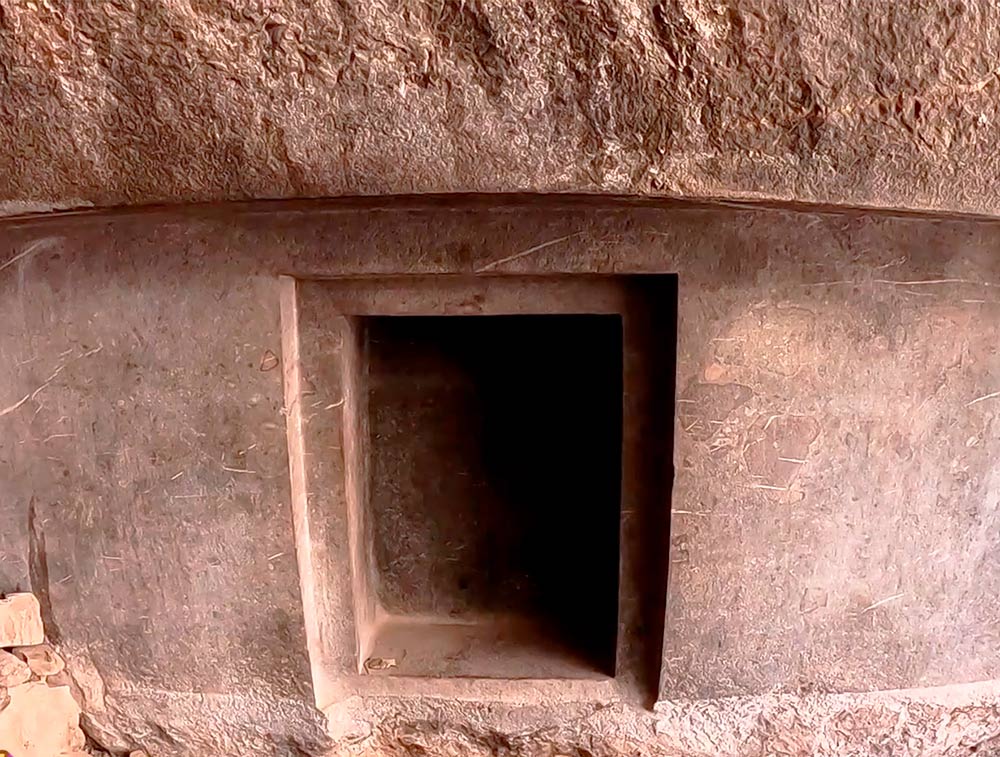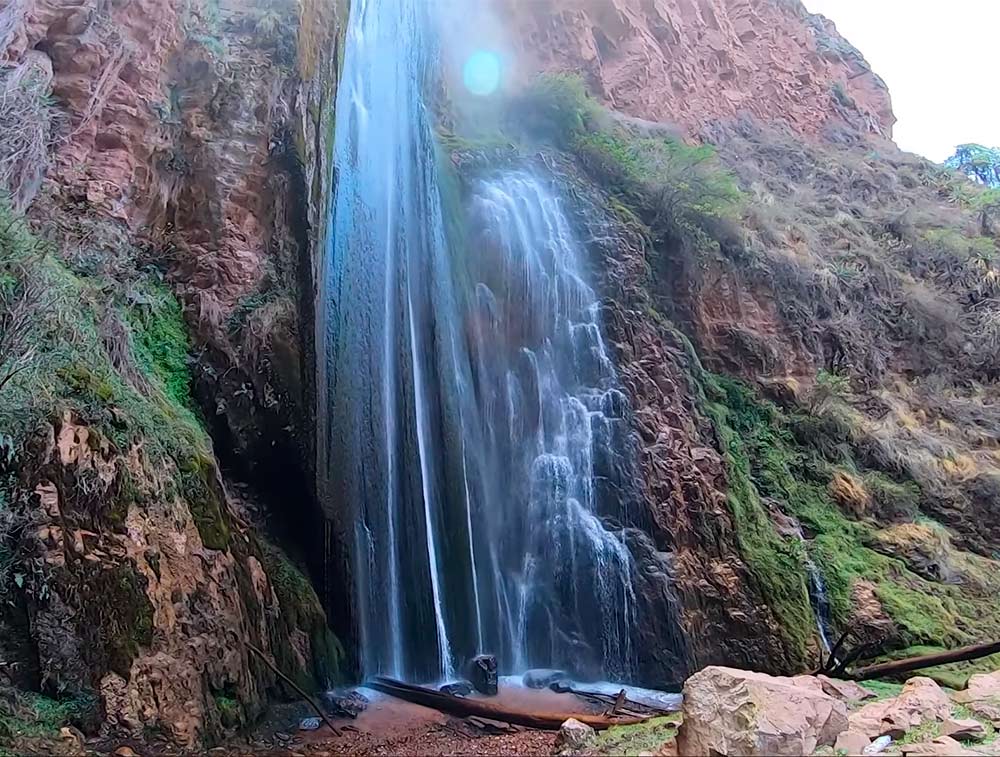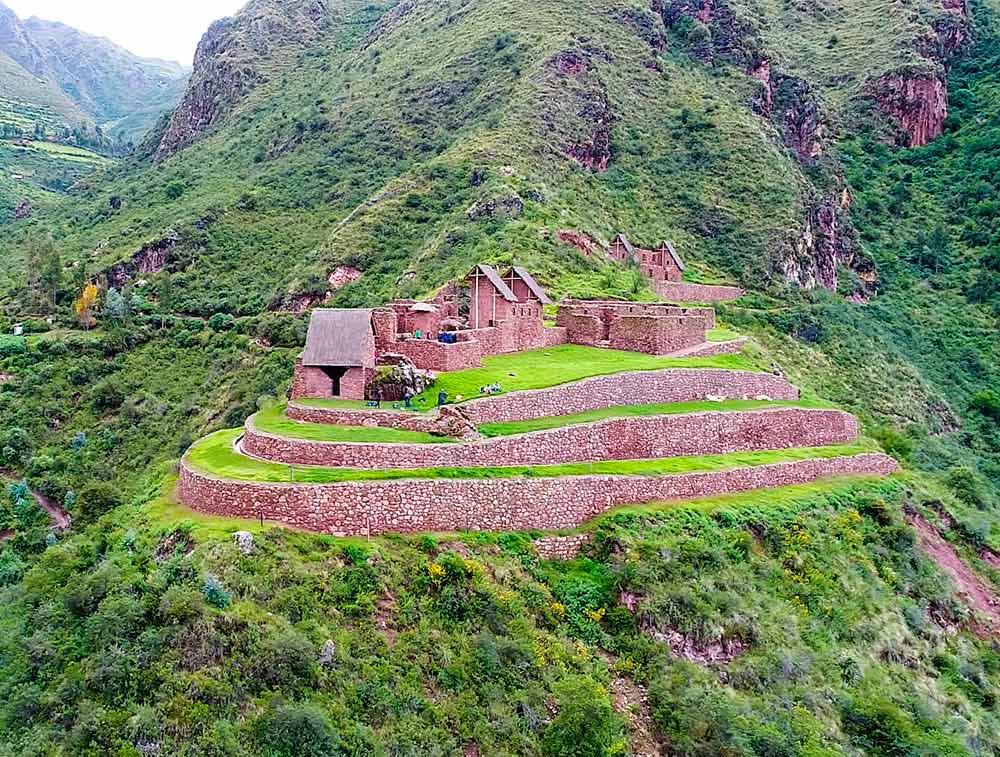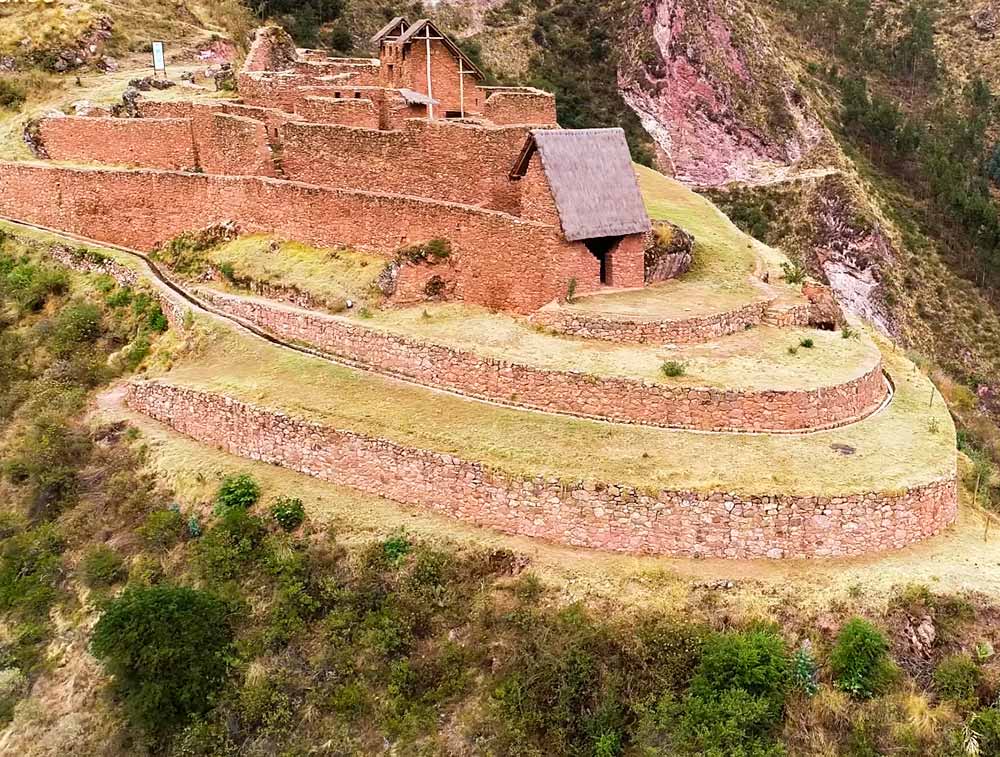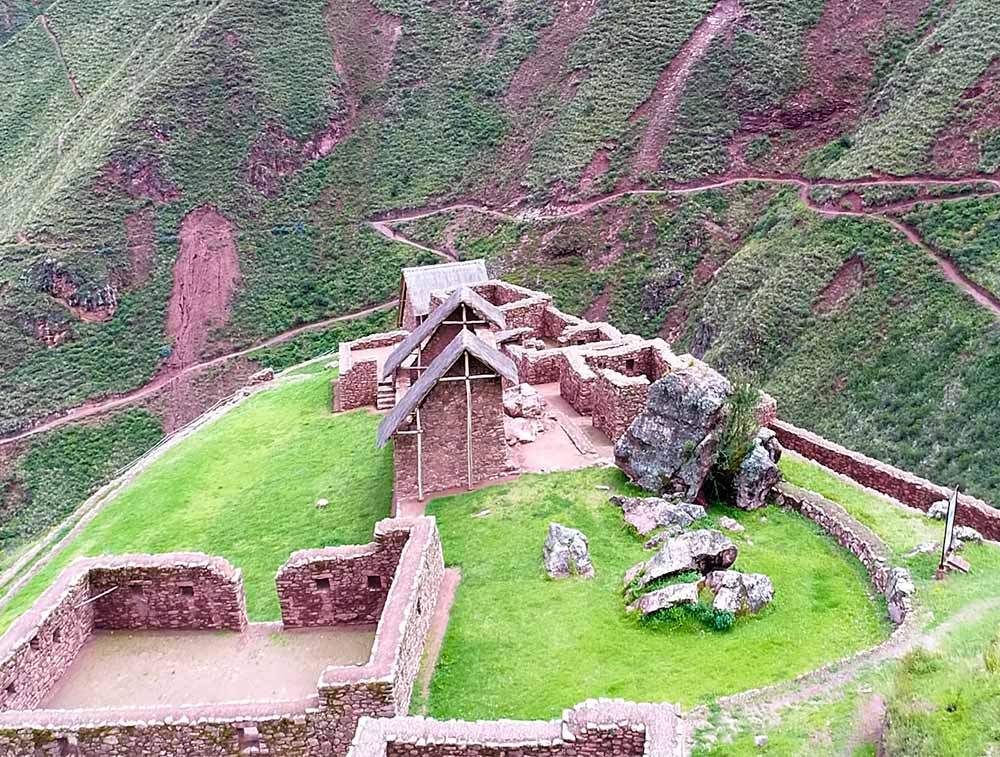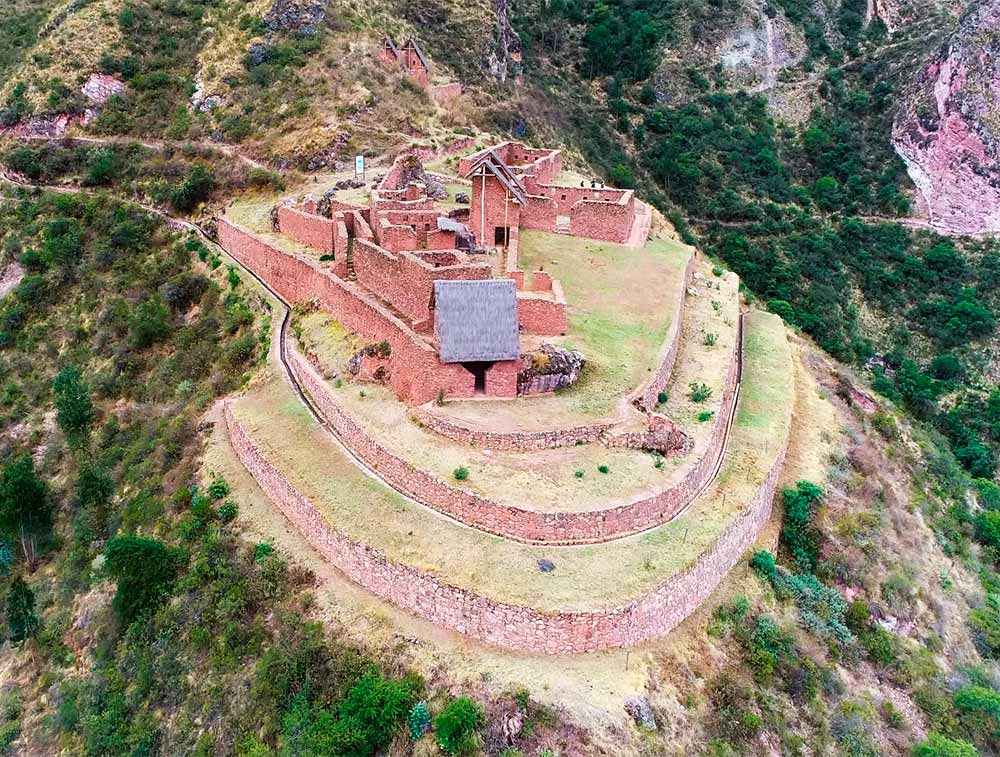The waterfall of Perolniyoc in Cusco
The Perolniyoc waterfall is one of the best kept secrets of the Sacred Valley of the Incas. It is a waterfall of more than 45 meters high. Above the waterfall, located on a hill with splendid views, is the archaeological site of Raqaypata – Perolniyoc, an Inca settlement that is closely related to Ollantaytambo. Learn how to visit this novel place, prices, maps and more information.
- The Perolniyoc Waterfall
- Where is it?
- How to get there?
- Route map
- What to see?
- The archaeological site of Perolniyoc
- Other famous waterfalls in Cusco
- How much does it cost to go?
- What to bring?
- Gallery
- More information about
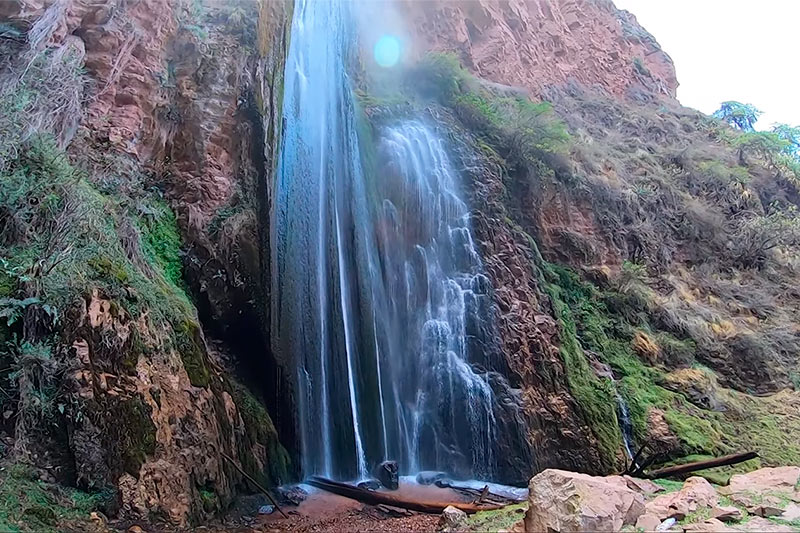
Perolniyoc Waterfall – Sacred Valley
The Sacred Valley of the Incas is a natural area very appreciated by the Incas since it has fertile lands. There they built many terraces, temples and cities like Pisac, Ollantaytambo or Chinchero. The place also hides incredible natural beauties such as the salt mines of Maras or the Perolniyoc waterfall. Over these waterfalls the Incas built an enclosure with colcas, kallankas and religious huacas.
The Perolniyoc Waterfall
- The Perolniyoc waterfall is a natural tourist attraction in the Sacred Valley of the Incas. Due to its strategic location near important Inca citadels such as Ollantaytambo, the falls are valued as a sacred site.
- Over the Perolniyoc waterfalls is the archaeological site of Raqaypata – Perolniyoc, recognized as an important Inca enclosure. From there, you have a privileged view of the Pillcobamba and Soqma valleys.
- The falls are a place of relaxation for local tourists and the few foreigners who dare to go there. Some people even perform religious ceremonies, just as the Incas probably did. To get there you must take a short hike surrounded by spectacular scenery.
Where is it?
- The Perolniyoc waterfall is located in the heart of the Sacred Valley of the Incas. It belongs to the district of Ollantaytambo and the peasant community of Socma.
- Geographically, it is located at 3,520 meters above sea level.
How to get there?
- The tours to the Perolniyoc waterfall include transportation to the site.
- If you go on your own, you must travel by car to the town of Socma, either from the city of Cusco or from the town of Ollantaytambo.
- Once in the town of Socma you must make a short walk of about 1 hour. The route is full of incredible landscapes.
Route map
What to see?
- The Perolniyoc waterfall offers one of the best landscapes of the Sacred Valley of the Incas. The waterfall resembles a bride’s veil. The photos you can get there can be the best of the trip.
- In addition, tourists can refresh themselves in its waters, which then flow into the famous Vilcanota River.
- On the other hand, on the top of the waterfall, is the archaeological site of Perolniyoc, also called ‘Raqaypata’. Admission to both the waterfall and the archaeological site is free of charge.
The archaeological site of Perolniyoc
- The archaeological site of Perolniyoc was an enclosure built by ethnic groups that inhabited the Sacred Valley before the Incas. However, during the rule of the Inca Pachacutec, the Incas adapted the site to their typical architectural structures.
- The site has rooms (kallankas), storehouses (cocas) and religious monuments (huacas).
- In 2017, Cusco authorities invested more than 3 million soles to carry out enhancement works in Perolniyoc.
- The archaeological site played an important role since it communicated the city of Cusco with Ollantaytambo and, several kilometers away, the Inca city of Machu Picchu.
- It should be noted that the archaeological site is located near a stretch of the famous Inca roads, the ‘qhapac ñan’.
Other famous waterfalls in Cusco
- Mandor Waterfall – In the town of Aguas Calientes (a short distance from Machu Picchu) is this waterfall that is part of the gardens of Mandorpampa. The waterfall reaches 30 meters high. To get there you must hike for about 1 hour. The entrance fee is 10 Peruvian soles.
- Siete Tinajas Waterfall – Only 20 kilometers from the city of Quillabamba is this waterfall that has a waterfall over seven rock formations like jars. On a rock there is a petroglyph with geometric and anthropomorphic forms belonging to native ethnic groups. The entrance ticket costs 3 Peruvian soles.
- Illapani Waterfall – Just 1 hour drive from Quillabamba, in the district of Echarate, is this famous waterfall of several meters high. Around it there is thick vegetation typical of the Cusco jungle. The final stretch is on foot. Admission is free.
- Pocpoc Waterfall – Only 32 kilometers from the city of Cusco is the Pocpoc waterfall, famous for its 25-meter waterfall. The adventure begins in the town of Chinchero from where you must walk 2.5 kilometers through ancient Inca roads to reach the waterfall. Admission is free.
How much does it cost to go?
- Admission to the Perolniyoc waterfall is free.
- The 1-day tour to the Perolniyoc waterfall costs approximately $70 per tourist. The price varies according to the tour agency you choose.
What to bring?
During your visit to the falls do not forget to take with you:
- Comfortable and light clothing for trekking.
- Comfortable shoes for trekking.
- Hat (or cap).
- Sun block.
- Rain poncho.
- Towel.
- Camera.
- Snacks.
- Rehydrating drinks.
- Documents.
- Extra cash.
More information about
- The visit to the Perolniyoc waterfalls can be done throughout the year. However, it is best to do it in the dry season of Cusco. That is, during the months of April to October, when the rains are not frequent and the atmosphere is better for hiking.
- The waterfalls are not yet a popular tourist attraction. It is estimated that an average of only 10 tourists visit the site every day. The enhancement of the archaeological site of Perolniyoc seeks to receive more and more visitors.
- A short distance from the waterfall there are other tourist attractions such as the ‘Ñaupa iglesia’, a rock formation that resembles a church. It is believed that this place was a mysterious portal that connected with other sites. The Incas made fine carvings in this place.
By Ticket Machu Picchu – Last updated, July 11, 2024
